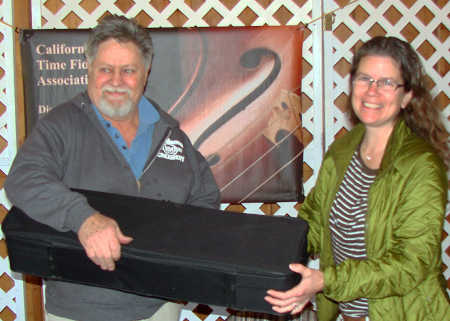Timed perfectly to coincide with Spring Training, the Smithsonian Channel has teamed up with Major League Baseball to tell the stories of four legendary players who transcended the National Pastime and left legacies as true American icons.
The series, which began Feb. 19, continues each Monday night thereafter at 8 p.m. until March 21, when the Smithsonian Channel devotes the evening hour for an insightful look at the very best baseball heroes, with narration provided by Martin Sheen.
The opening episode can be seen for a limited time at http://www.smithsonianchannel.com/shows/major-league-legends/hank-aaron/1004228/3430533 .
The stories take an in-depth look at the history, psychology and mythology of each of the Baseball Hall of Famers, a very select group that includes Home Run King Hank Aaron, Yankee legends Babe Ruth and Lou Gehrig, and arguably the greatest hitter ever, Ted Williams.
The programs are interesting in that context is provided to the achievements of each player with old newsreels and interviews with a host of journalists, academic, sports figures and even a mythologist.
First up to bat, so to speak, is Hank Aaron, and fortunately the program involves extensive interviews with the subject himself.
Coming from Mobile, Alabama, Aaron had to face the challenges of growing up in the heart of Jim Crow, and the slugger recalls the presence of the KKK staking a burning cross in front of his childhood home.
Known as “The Hammer,” Aaron endured a long battle of bigotry and racism during his baseball career, even more so after his major league team, the Milwaukee Braves, was relocated to the Deep South in Atlanta, Georgia in 1966.
Aaron recalled meeting with Martin Luther King, Jr., after moving to Atlanta, and lamented that he did not do more for the Civil Rights movement, since he was only hitting a ball with a stick. King told him to just keep hitting.
A significant portion of the Hank Aaron installment is devoted to his run to surpass Babe Ruth’s home run record.
Ugliness reared its head with the numerous death threats and hate mail that came his way. The high note is when Aaron hits the record-breaking number 715 on April 8, 1974.
Before Hank Aaron, Babe Ruth was the home run king, and the interesting fact that surprised me was the all-time home run record stood at 138 until Ruth retired with 714.
The Babe Ruth hour is devoted much to his troubled upbringing in a reformatory and his zest for life as a man about town.
Ruth was also the first athlete to have an agent, and his moniker as the Sultan of Swat made him a popular celebrity endorsement for products like cereal.
The program includes an interview with psychologist Harold Koplewicz who talks of the Babe’s impulsive nature and his troubled home life, even after he marries.
Best-selling author Jane Leavy recalls that as the decadence of the roaring Twenties fades away during his single season home run record year in 1927, Ruth’s most famous response to a question about making more money than President Hoover was when he said: “I had a better year.”
Nicknamed the Iron Horse, New York Yankees legend Lou Gehrig could have easily been called the Immortal, given that his greatest achievement was for bravery in facing the terminal disease of Amyotrophic Lateral Sclerosis that now bears his name.
The Gehrig program devotes a lot of attention to his closeness to his mother given that his siblings died in childhood and his father was absent.
He’s described as being uncomfortable in his own skin and not fitting in with other kids, especially as a working class kid attending Columbia University.
Integrity, honesty and dedication to family guided his every move. Lou Gehrig’s record of playing in 2,130 consecutive games would stand for more than 60 years, but it was the revelation of his humanity and grace in the face of impending death that would be best remembered.
The highlight of the Gehrig program may well be the Fourth of July ceremony in 1939 at Yankee Stadium where Gehrig, in recognition of his privilege wearing pinstripes, delivered his moving speech in which he said: “I consider myself the luckiest man on the face of the Earth.”
The final chapter of the Smithsonian series is dedicated to Boston Red Sox sensation Ted Williams, who appears in an archival interview conducted in 1999. In his narration, Martin Sheen notes that Williams had an unshakable quest for perfection.
That pursuit of excellence put Williams on the track of obsessive determination that would have him wishing to be the greatest hitter who ever lived. Author Ben Bradlee Jr. observes that it was this desire that proved to be the legend of Ted Williams.
When first called up to the Red Sox in 1939, Williams proved his devotion to the craft of hitting by scoring a record number of 145 RBIs for a rookie. His stellar first year was followed by a rockier second one, which saw the press turning on him when he couldn’t take criticism.
And yet, Williams bounced back into full form in his third year, becoming the last major leaguer to hit over .400 for a season.
Then, after the 1942 season, World War II interrupted his prime years when he enlisted in the Navy and also served in the Marine Corps.
The Korean War also interrupted his baseball career when he served as a fighter pilot in 39 combat missions, and then he returned for another six years in Boston. At the advanced age of 39, he achieved a .388 batting average.
Fittingly, Ted Williams hits a home run in his final at-bat on September 28, 1960, and the program captures the feat of greatness with archival footage. Mythologist Phil Cousineau describes the scene as a Roy Hobbs moment from “The Natural.”
Baseball fans should treasure and enjoy the special treatment of the baseball legends that the Smithsonian Channel has so lovingly put together in cooperation with Major League Baseball.
Tim Riley writes film and television reviews for Lake County News.











